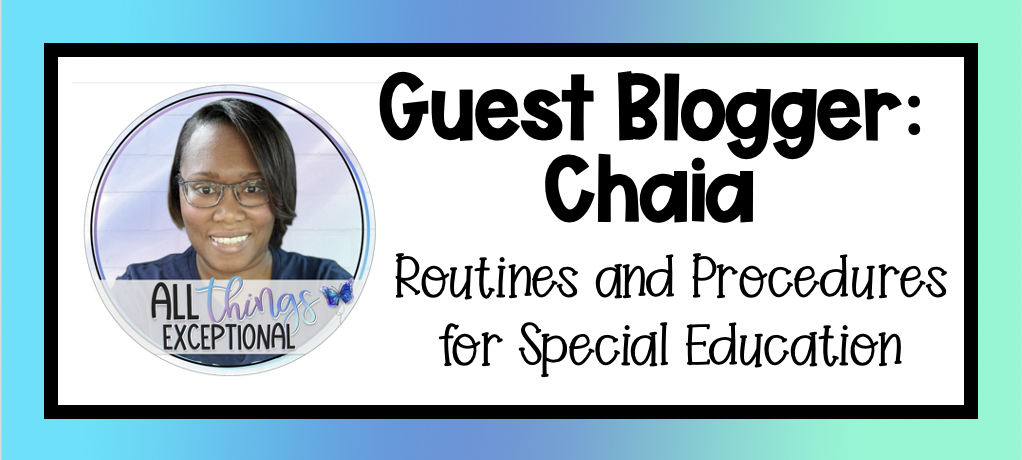I’m excited to introduce this week’s guest blogger – Chaia from All Things Exceptional to talk all about special education routines and procedures that all teachers must have in their classroom!

These terms (routines and procedures) are often used interchangeably but they are not the same. Simply put – a procedure is a specific way of getting something done and a routine is a regularly followed action. Routines and procedures are the foundation of your classroom. They are expectations for all parts of your classroom. They must be taught and reviewed regularly.
Having routines and procedures fosters independence, builds confidence and prevents behaviors due to idle time. Students know what is expected of them at all times. I strongly suggest the use of visuals to help build independence and confidence. You should include pictures and words for students that are not able to read yet.
If students are taught to refer back to the visual posted in the area where it is needed, they typically will not interrupt instruction for clarification or forget a step. However, this has to be taught consistently across all areas. By doing this, students learn that they are capable of doing things on their own which builds their confidence!
Knowing the expectations prevents disruptive behaviors. For example, after students complete an assignment they know that they are to take out a book and read until you are ready to check their work or put their completed work in a basket and move on to the next assignment. Having this expectation established will prevent off task behavior and allows you more time to teach.
Are you still confused? Do you still have questions or concerns? Are you in need of advice related to your routines and procedures? If so, please know that I am here for you. Feel free to message me on social media @allthingsexceptional or send me an email at [email protected]
Looking to learn more about Morning Routines – look no further!
Adding a tolieting routine in your classroom? I got you covered!
Instagram | TeachersPayTeachers | Facebook | Boom Learning Library | Pinterest |Youtube
What are you looking for?
COPYRIGHT © 2025 Full SPED Ahead